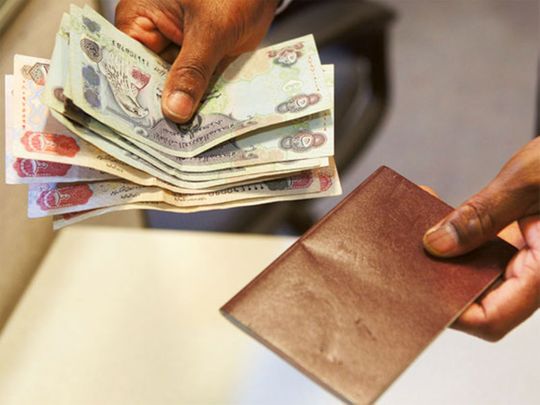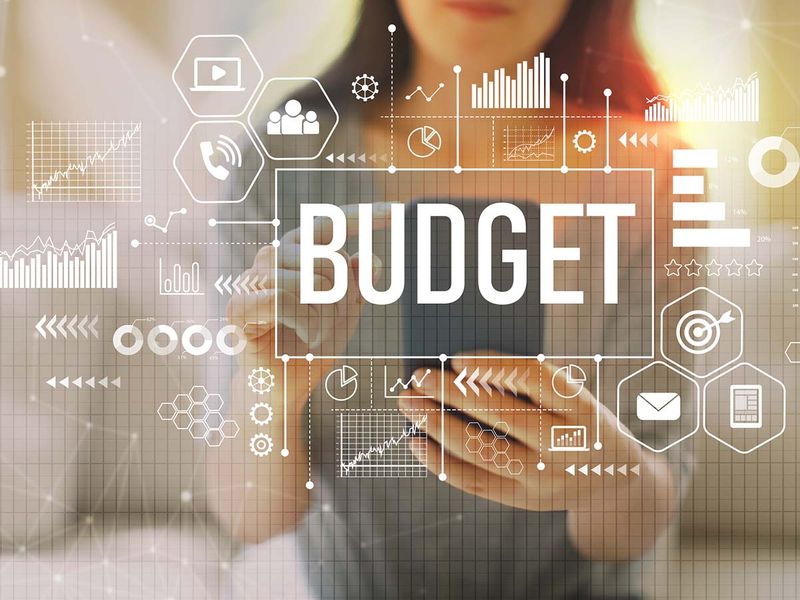
Dubai: Most commonly used budgeting practices help ensure you’re spending doesn’t overtake your income. But if you don’t have a regular monthly income, what can you do?
You might be employed in a job that may pay out only part of the year or maybe you own a seasonal business, or you may even be earning your pay from working freelance or on a pre-set contract.
One month, your income may not be enough to float your personal living expenses, while other months, you might make enough to cover off six months of expenses.
Since the majority of traditional budgeting techniques work only with the assumption of a steady salary, basic budgeting is a different story when you have an irregular income.
If your income is inconsistent or irregular, here's how to create a type of budget, otherwise known as the ‘cash flow bucket system’, which will work instead of outmoded practices that are unreliable in your case.

The ‘cash flow bucket system’, a budgeting technique for inconsistent earners
When it comes to budgeting on an inconsistent income, one way is to slowly build up your savings to the point where you can pay yourself a regular monthly salary out of your cash reserves. How do you do this? By using a method called the ‘cash flow bucket system’.
With this system, instead of having your salaries deposited into your current account, they will go into savings. Once a month, you'll transfer the amount you need for expenses and bills into your checking account.
This system is a great fit for anyone with irregular income, because it keeps excess money from burning a hole in your current account, and will help you smooth over the irregularities in your income.
However, creating a cash flow bucket system can take a little more time with inconsistent income. So here are the steps you need to follow to get the cash flow bucket system to work for you.

Step #1: Set aside excess income
Before you deposit all of your income into your savings account, start by putting away excess cash during your high-income months. This can take some discipline, experts opine.
This is because when receiving income irregularly there are often months you are flush with cash, and months you aren’t as much. Most often the excess income is used for discretionary spending.
That's why experts explain it's important to recognise when you are experiencing a flush month and immediately put aside as much of the excess income as you can.
The larger your savings account is as you start the cash flow bucket system, the easier it will be for you to smooth over the inconsistency of your income.

Step #2: Determine your minimum budget baseline
The next step is determining your baseline expenses for a regular month. This baseline should be comprised of the expenses that are the absolute essentials for maintaining your life — such as your rent or mortgage, utility bills, transportation or a vehicle loan and groceries.
This figure should be relatively easy to calculate. Write down your fixed expenses, such as your rent or mortgage, and estimate the fluctuating expenses, such as utility bills and groceries, by figuring the average cost over the past six to 12 months.
When you know your baseline minimum, compare it to your existing savings account balance. Assuming you already have some money saved, you can see how many months' worth of minimum expenses you have set aside in your savings account — or how much you need to accumulate.
Experts explain how it's also a good to have three to six months' worth saved up, depending on the variability of your income. Just recognising that you could survive with no money coming in for several months can help ease a great deal of the financial stress that comes with an inconsistent income.

Step #3: Calculate your discretionary expenses
Once you know the bare minimum that you need to have on hand, it's time to calculate how much you spend each month on discretionary purchases. This will include your spending on everything from dining out, to entertainment, to your hobbies.
It's a good idea to go over past months' worth of bank statements and credit card bills to figure out how much you have spent on average on these discretionary expenses in the past. This way, you can come up with an average monthly discretionary budget.
Be prepared to cut your discretionary spending as needed, since that can help you smooth over your inconsistent income more quickly. The best way to pare down discretionary spending is to cut things from easiest to hardest.

Step #4: Start having your salaries deposited into savings
Now that you've accumulated your savings account during flush months, and figured out your baseline budget level and monthly discretionary spending, you can start having your payments from clients deposited directly into savings, rather than your current account.
Then, on the first of each month, transfer your "monthly salary" from your savings account into your current account to pay for your monthly expenses.
This is where things differ between someone with a steady salary and someone with irregular income.
Depending on how much money you have already set aside in your savings account, and how frequently you deal with lean months, early on you may need to decide from month to month whether you will be living on your baseline budget or your baseline budget plus discretionary spending.
However, as you build up your cash reserves, you will be able to eventually switch to an automatic transfer of your baseline budget plus discretionary spending.

Step #5: Monitor your accounts, incorporate how you can start saving for retirement
Your current account will be nearly depleted by the end of the month, but if you calculated your budget correctly, the money should last you until the first of the following month.
If you find you are running short before the end of the month, you will need to look at your expenses to see where your calculation went wrong or your spending was too high.
You can also decide to move more money from your savings account into your current account or end unnecessary spending until the next month begins.
The next step of budgeting irregular income is to incorporate saving for the future. While the cash flow bucket system will put excess income into your savings account and hold it for your lean months, it does not take the place of saving for retirement or other financial goals.
Once you have reached a point that you have enough savings to consistently pay yourself a monthly salary, factor saving for the future into your monthly budget.
Set up an automatic transfer of that amount from your savings account to your retirement fund or (other savings vehicle). You will need to factor in the deduction from your savings account.

Bottom Line?
If you’ve got an irregular income, you should set up your budget based on your lowest monthly estimate. It’s easier to start low than to start with an average. This is because if you budget for the smallest amount, you can always go up from there.
To find this number, check out your pay slips from the last year and find the lowest one in them. If this is your first time working on commission or living on an irregular income, estimate what your lowest month will look like. That’s what you should put in as your income when you set up your budget.
A personalised budget, like the one elaborated above, allows you to focus on what you can do rather than on what you can't, even if you have irregular income. So taking the time to create a realistic budget makes it easier to manage your money.








